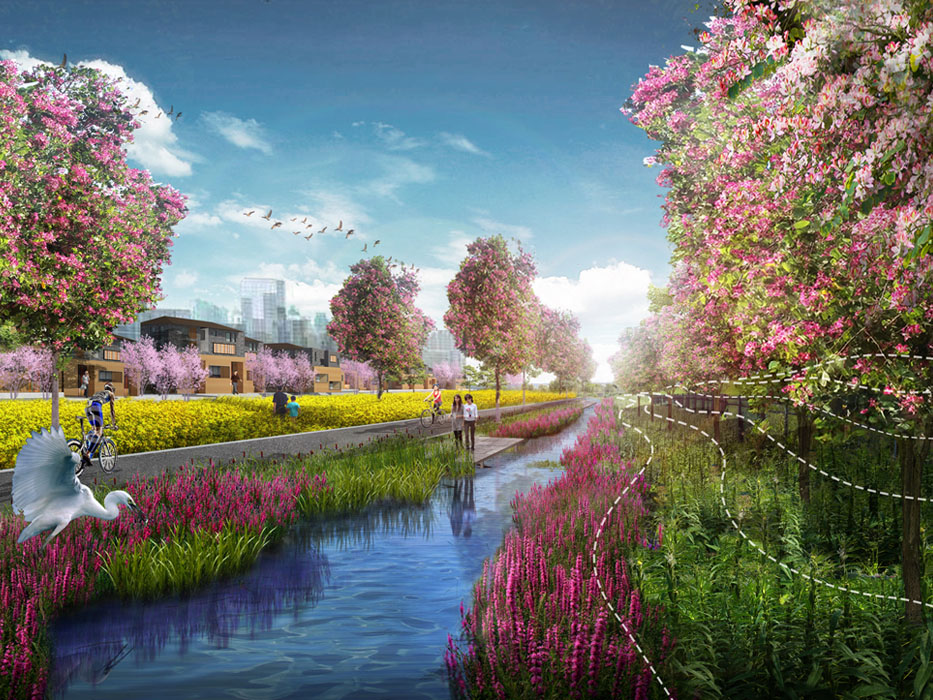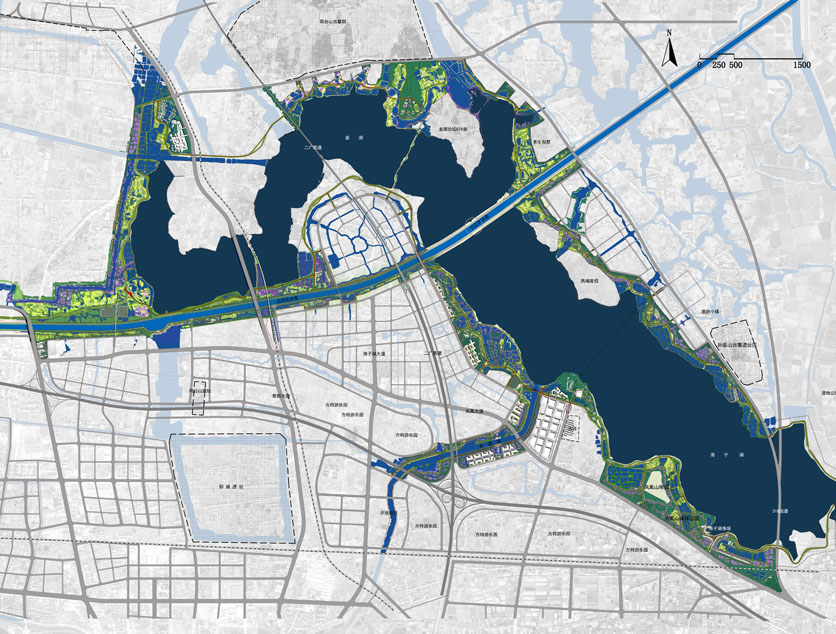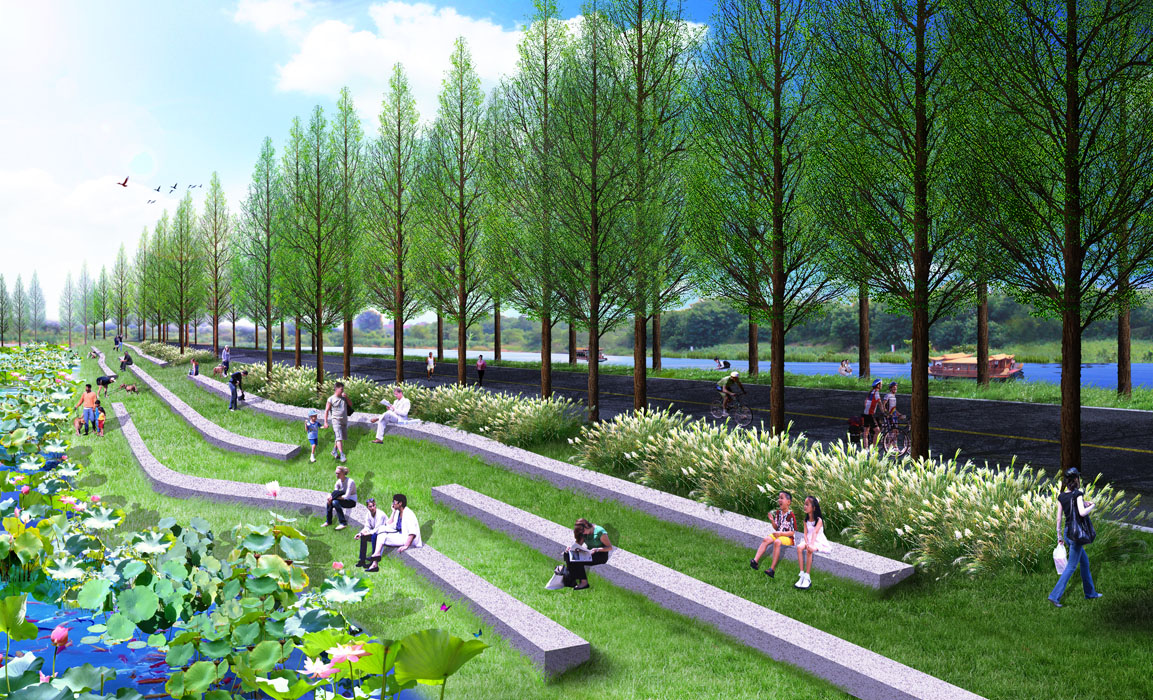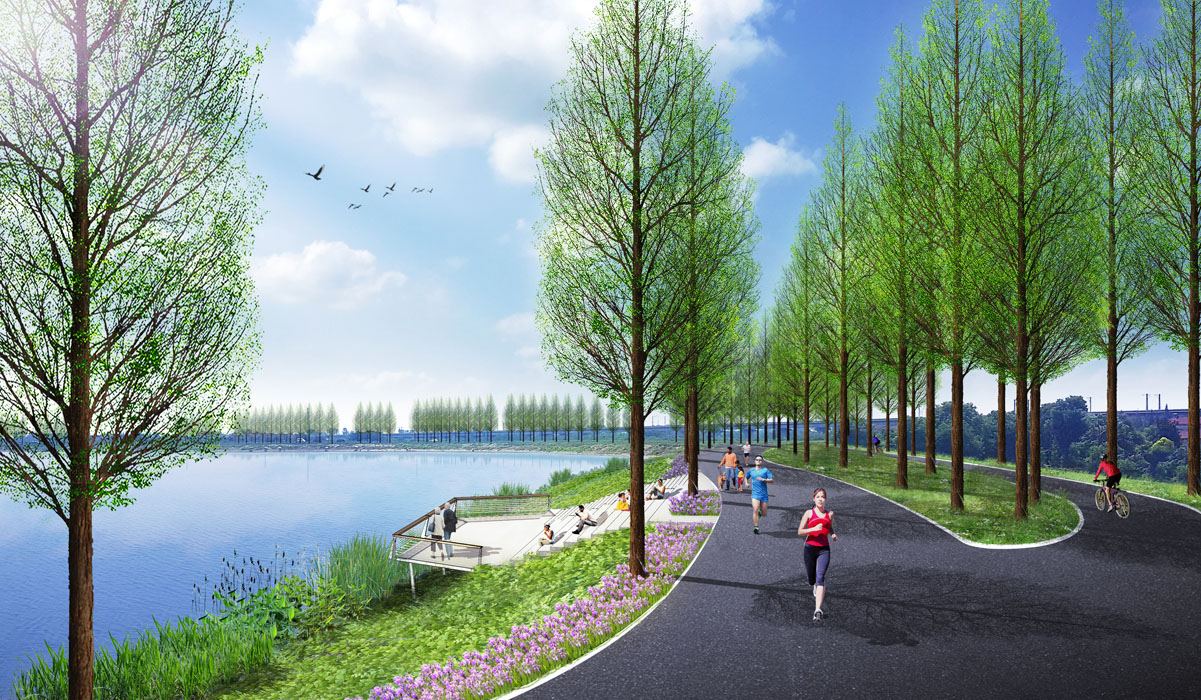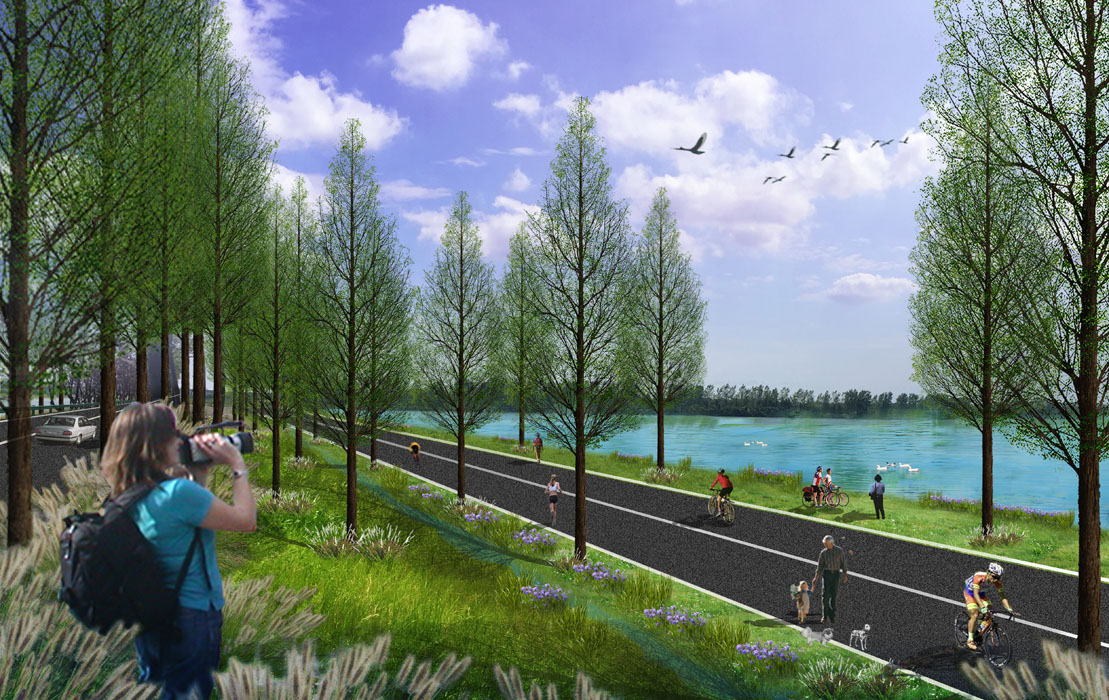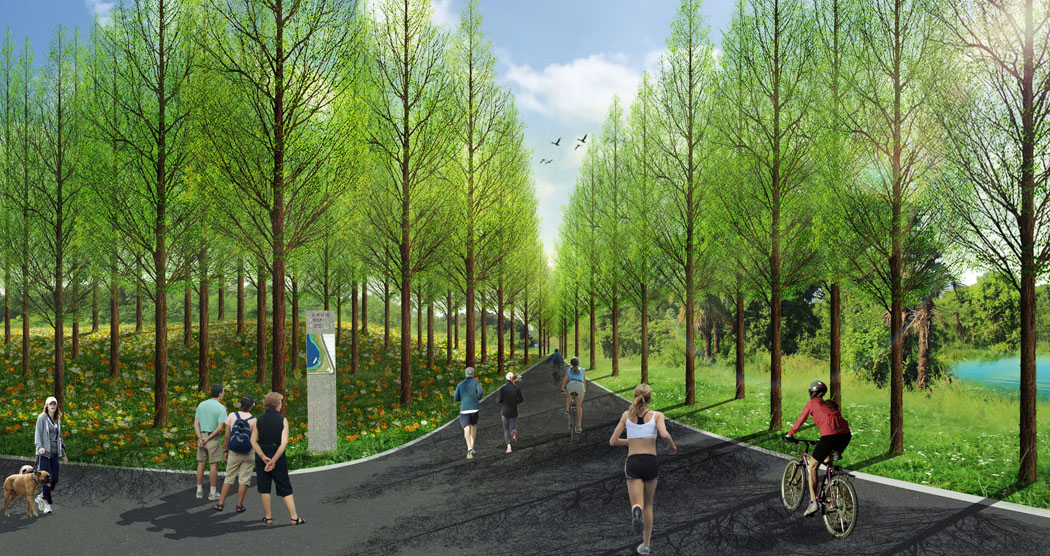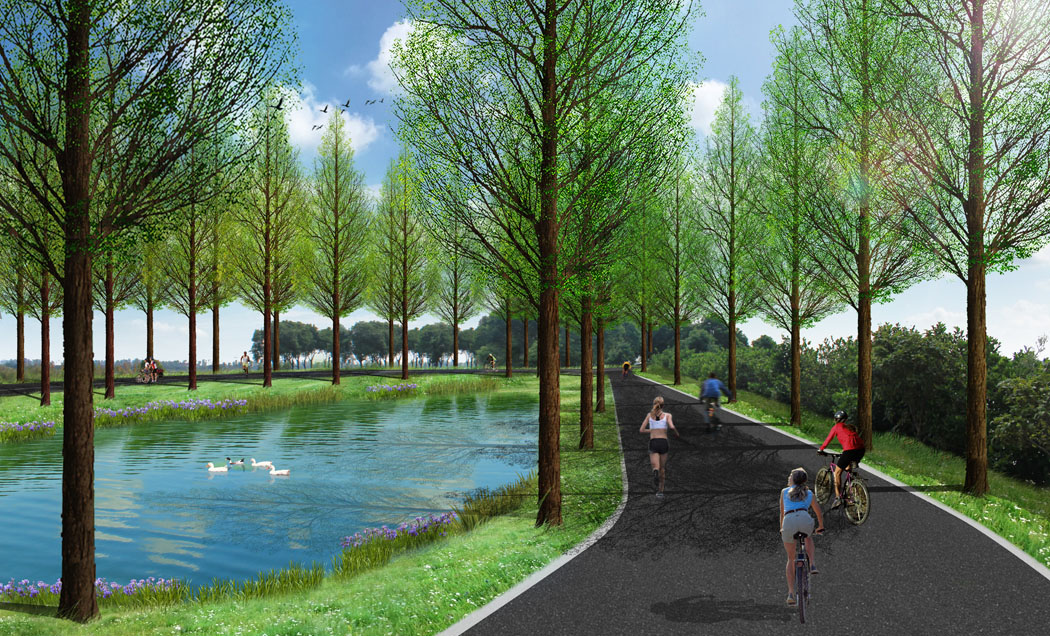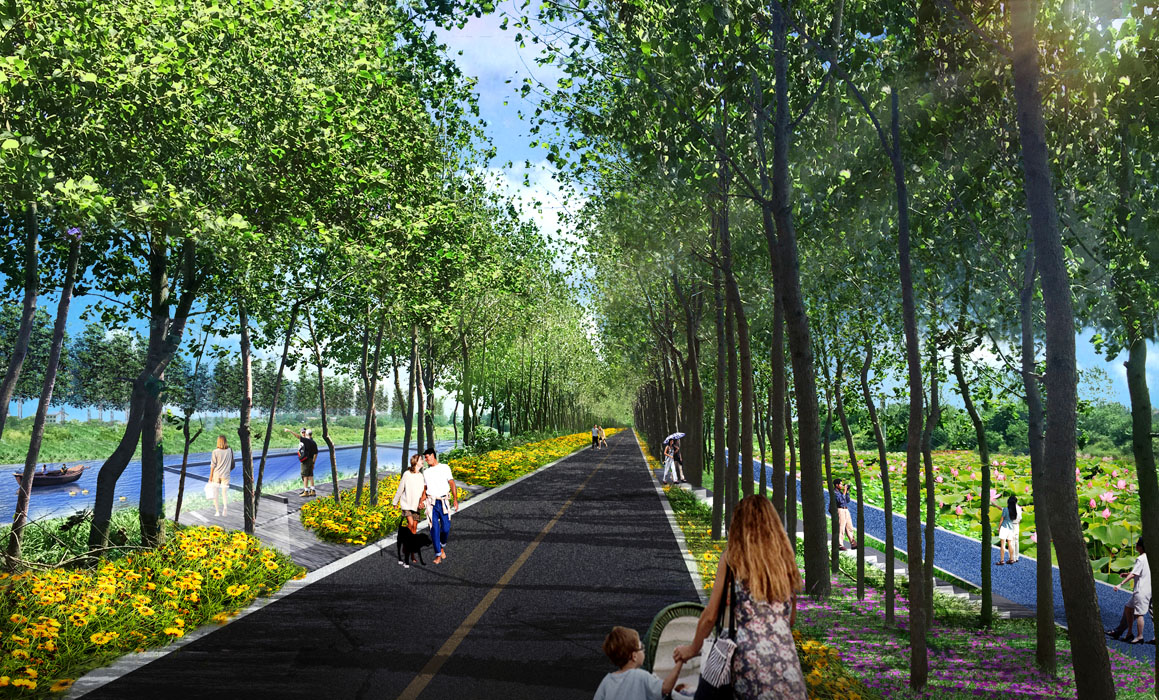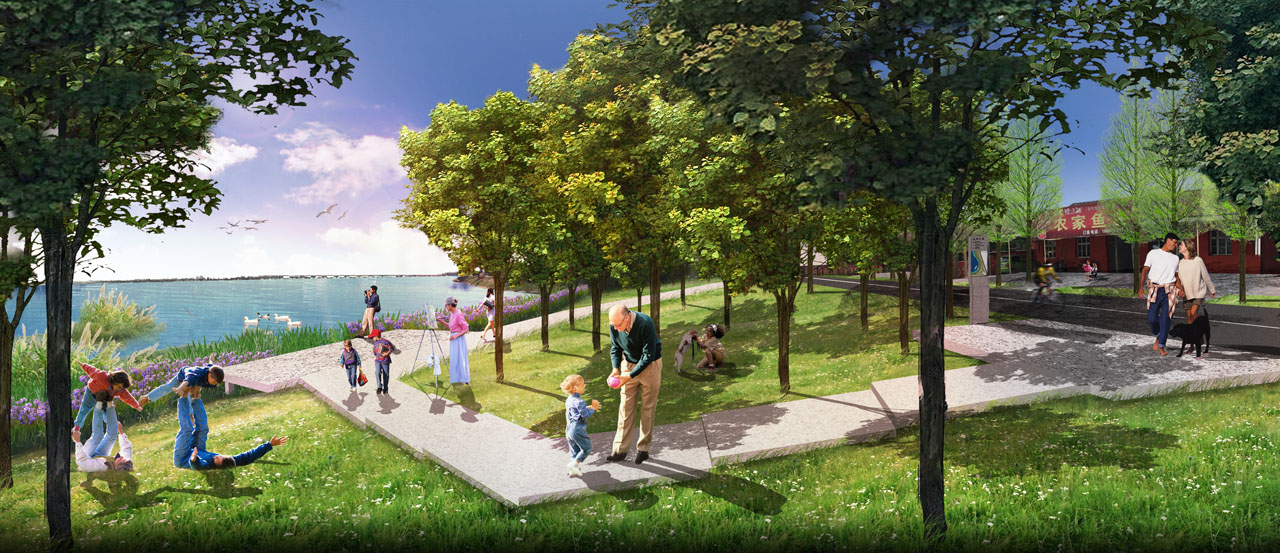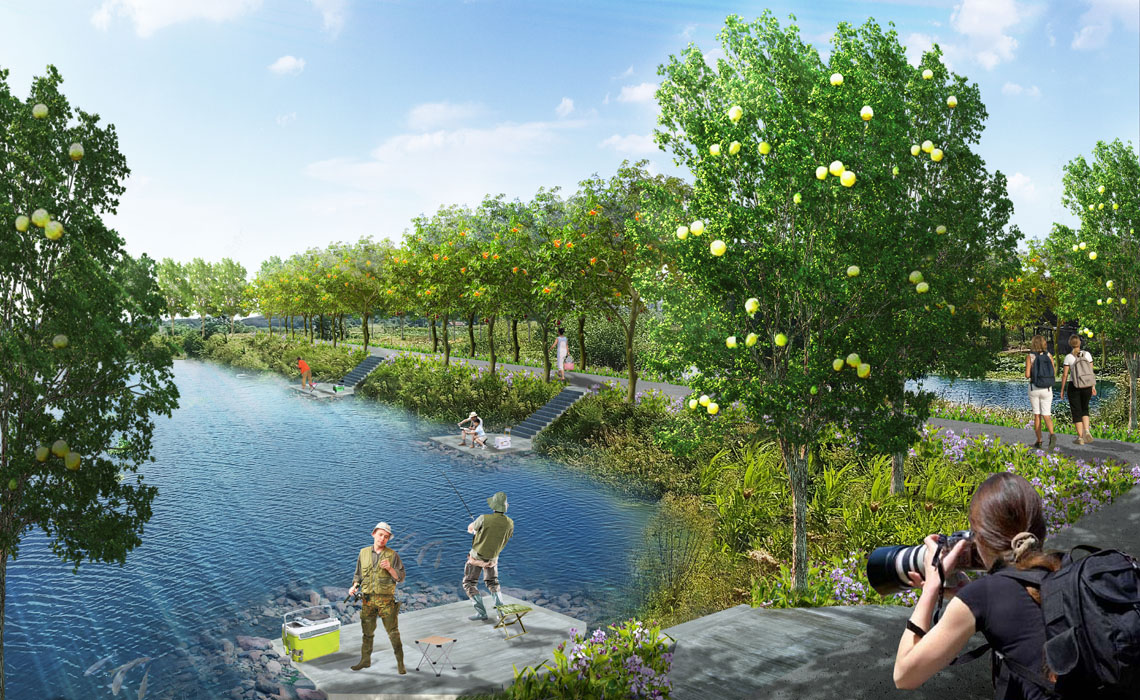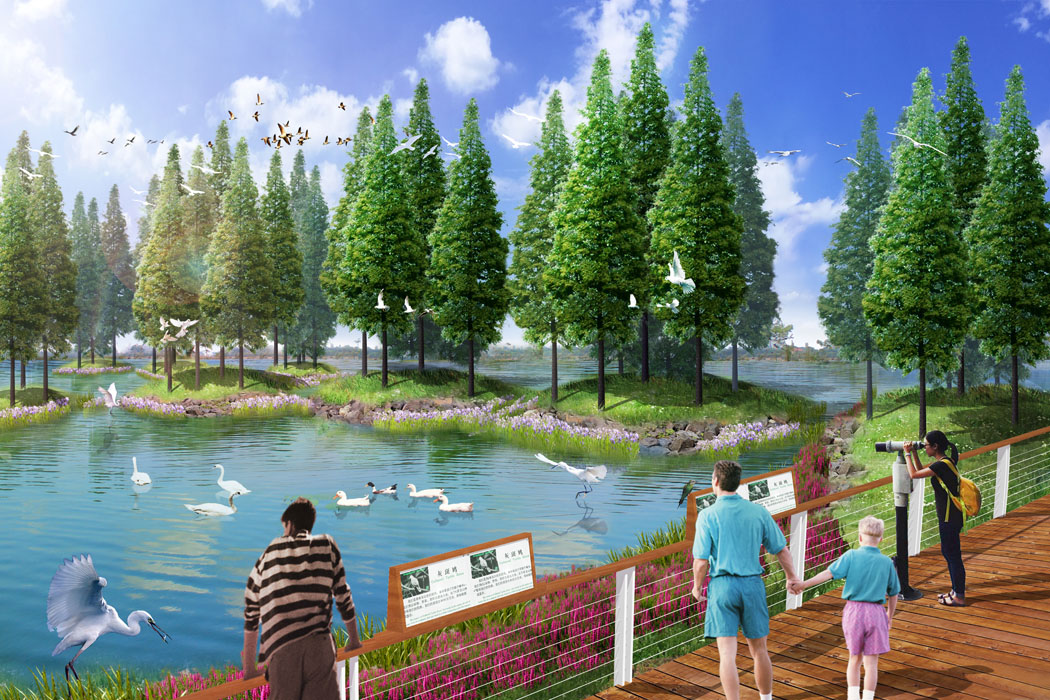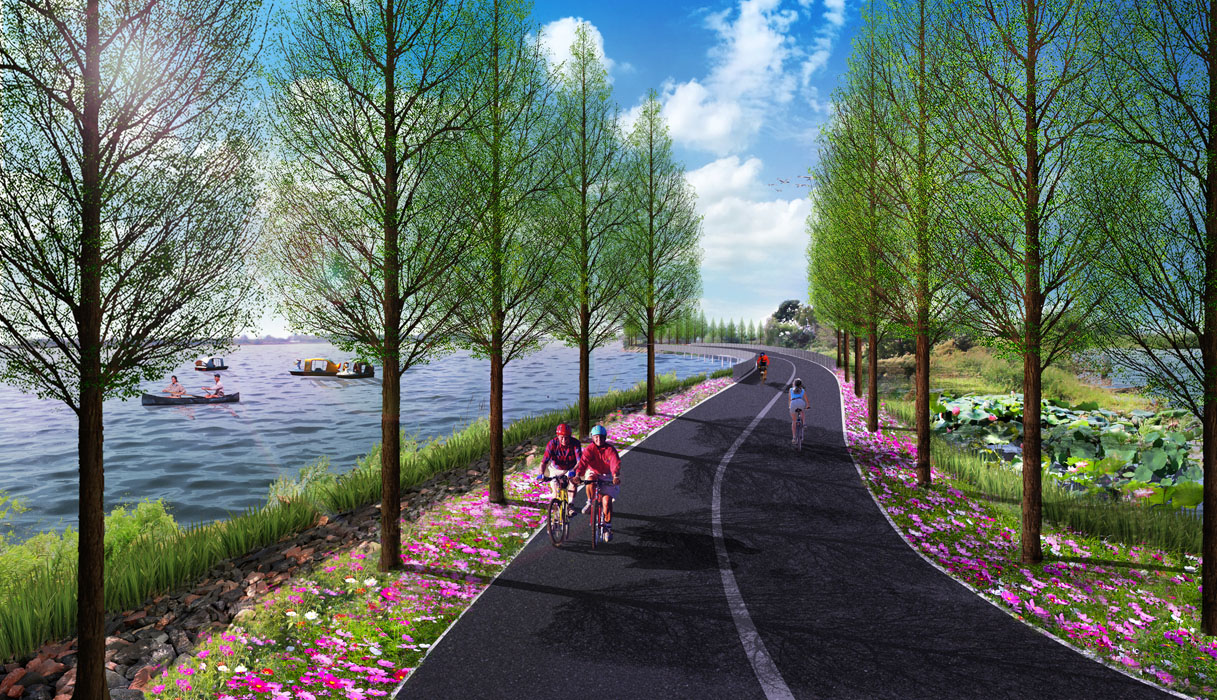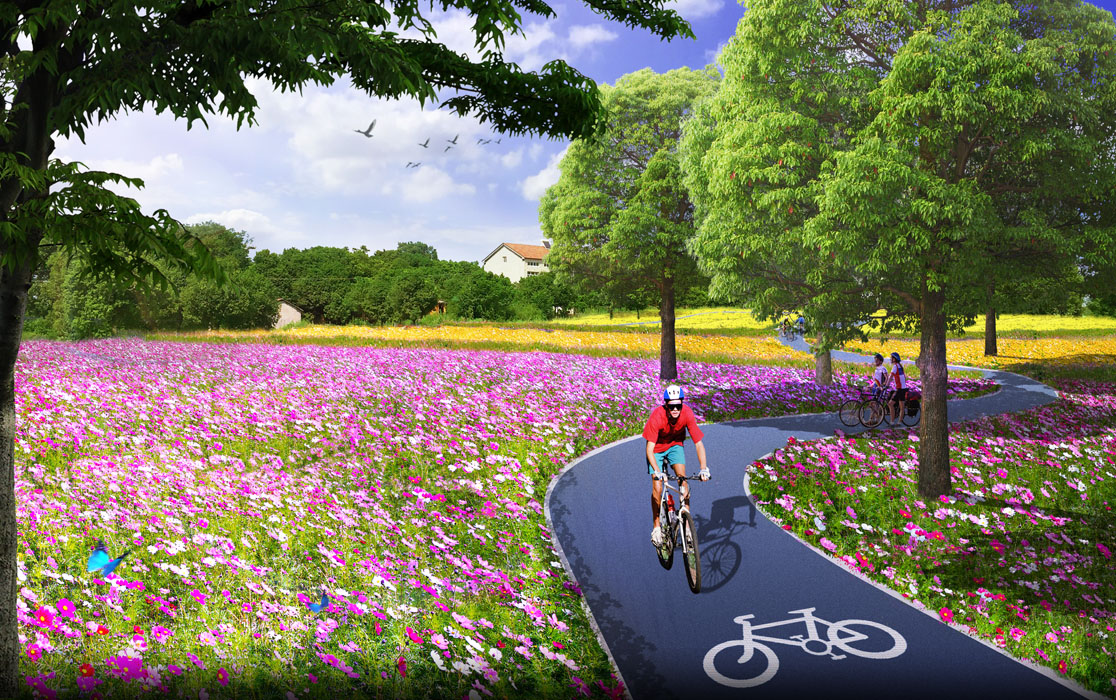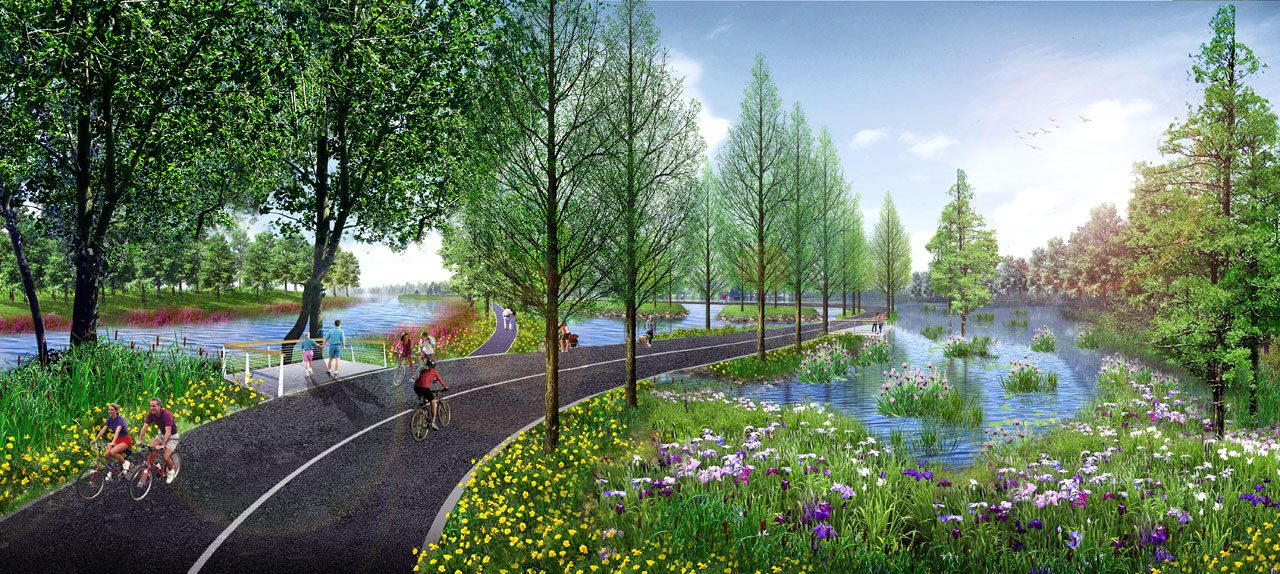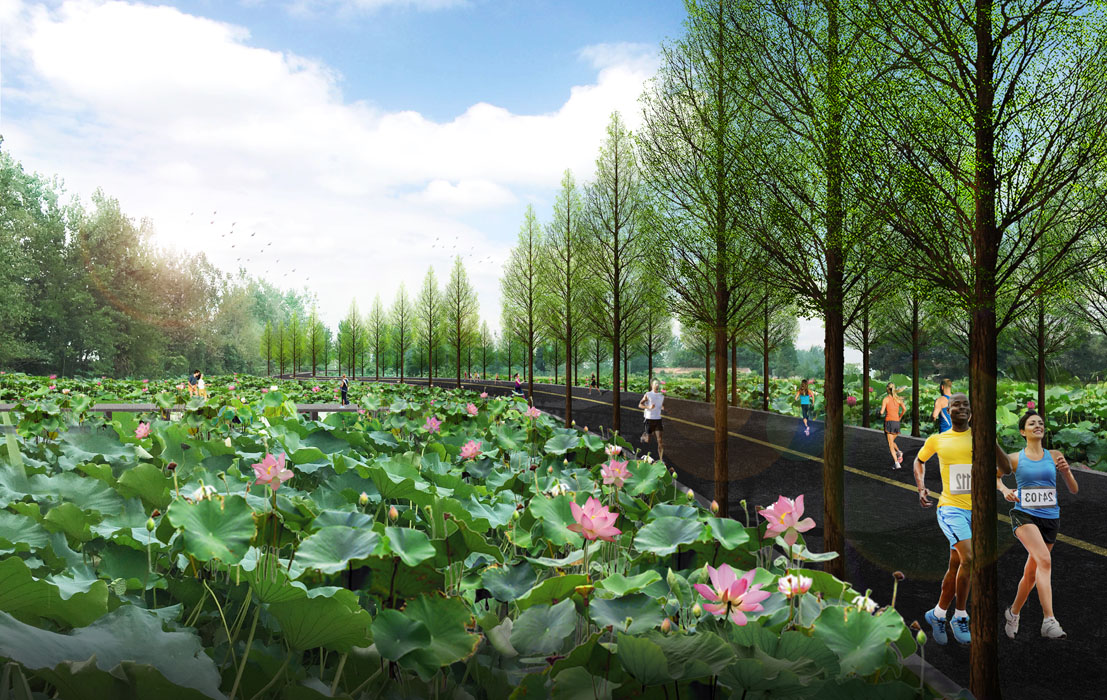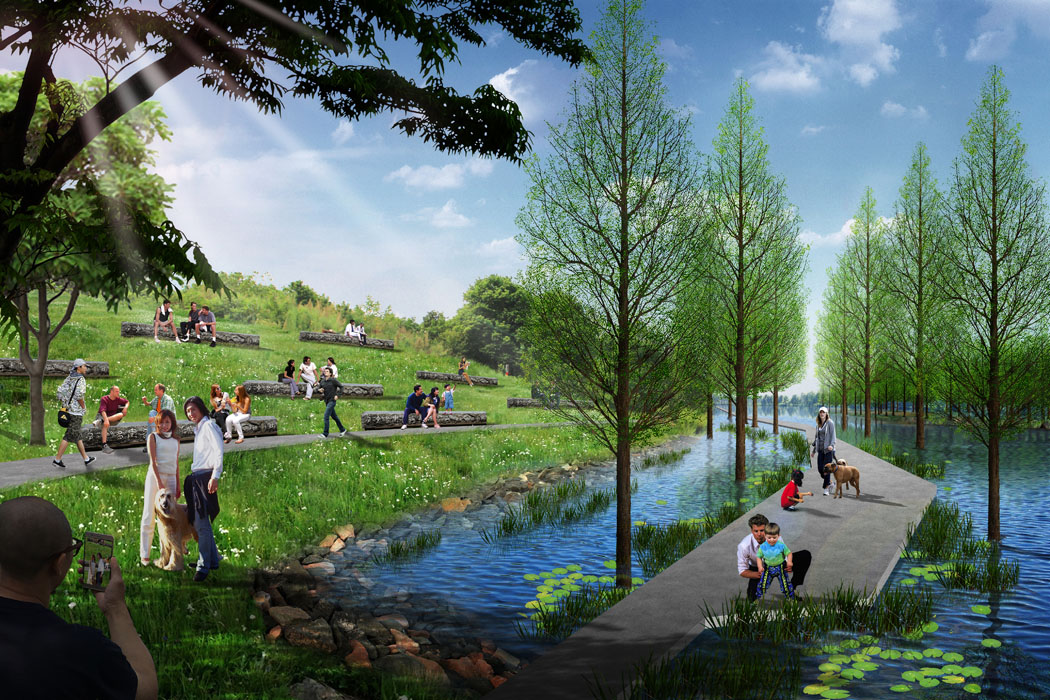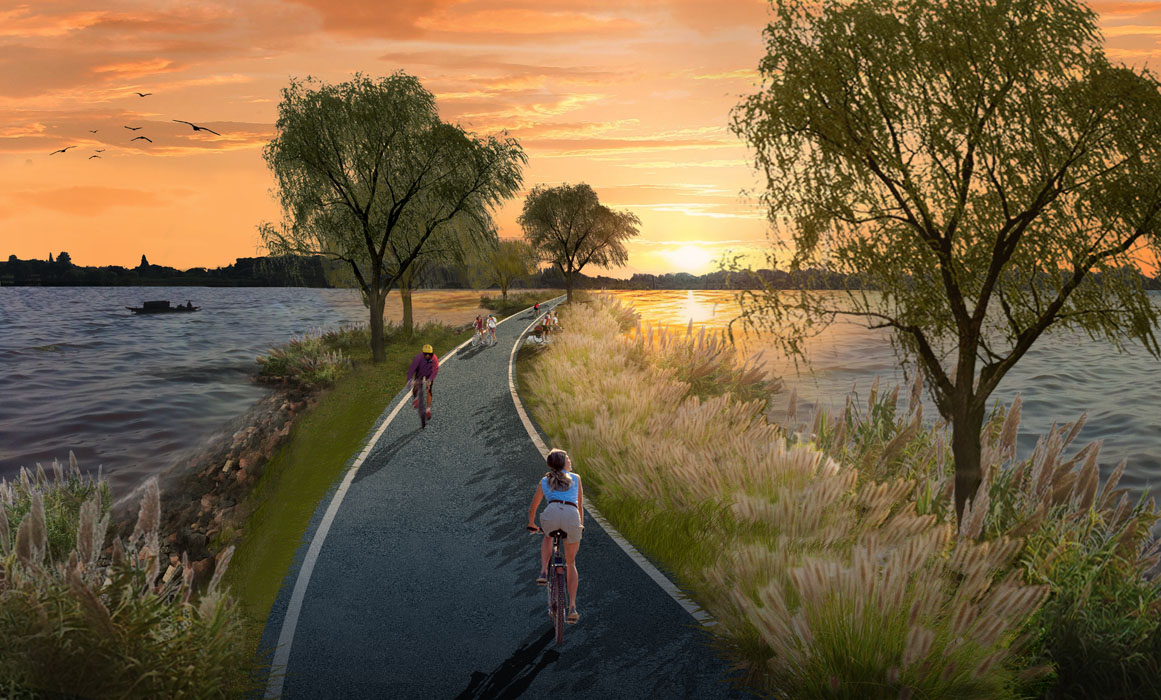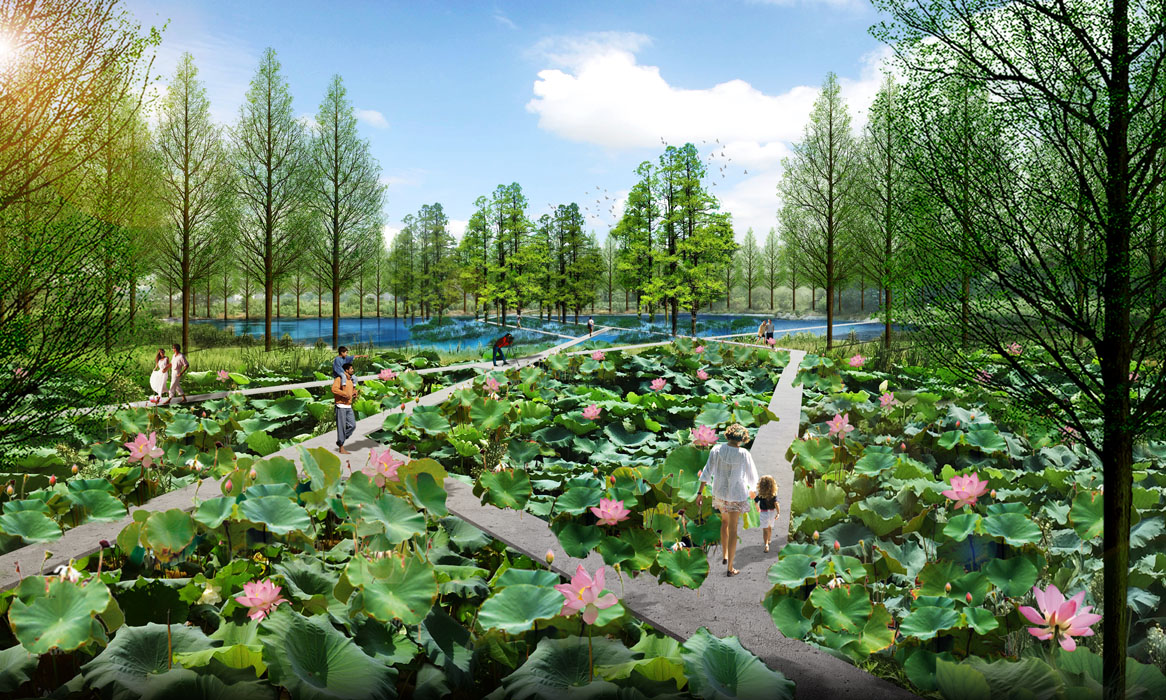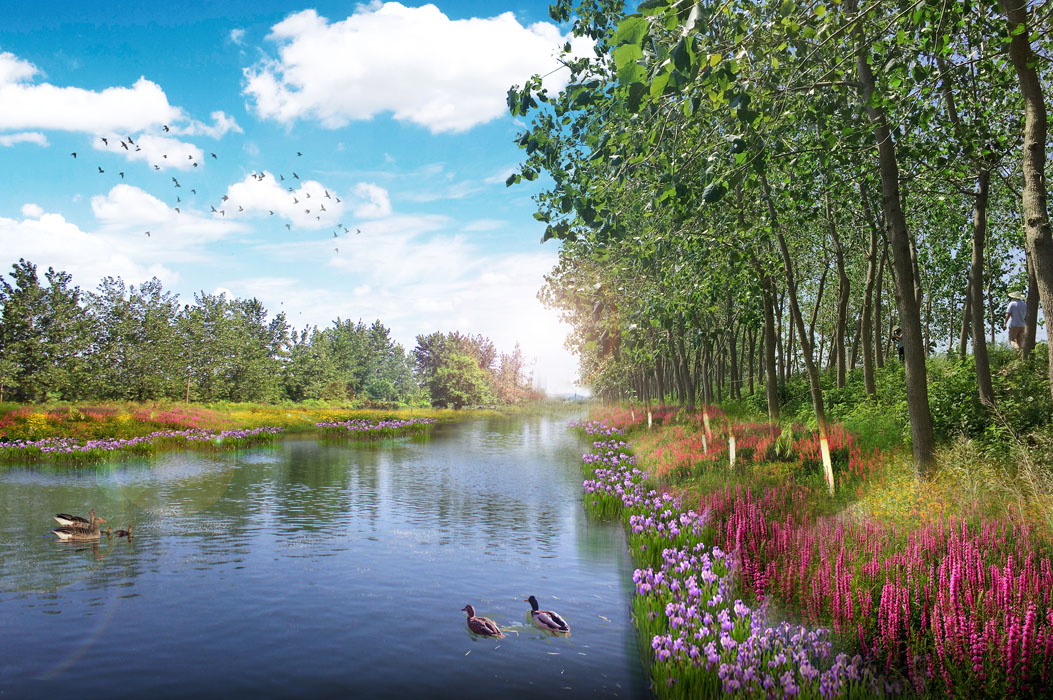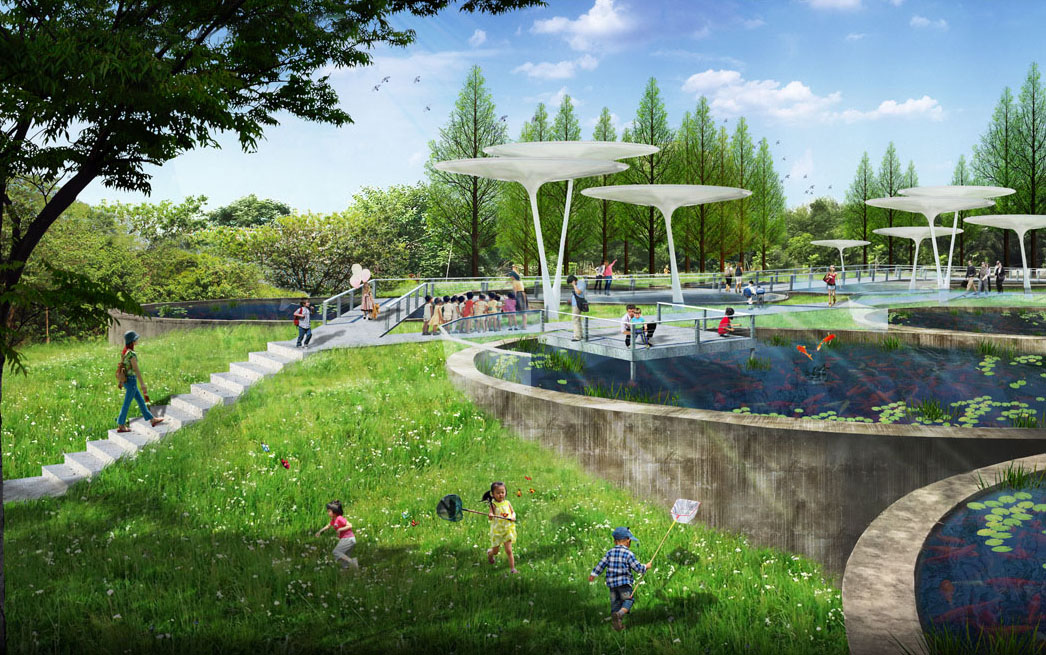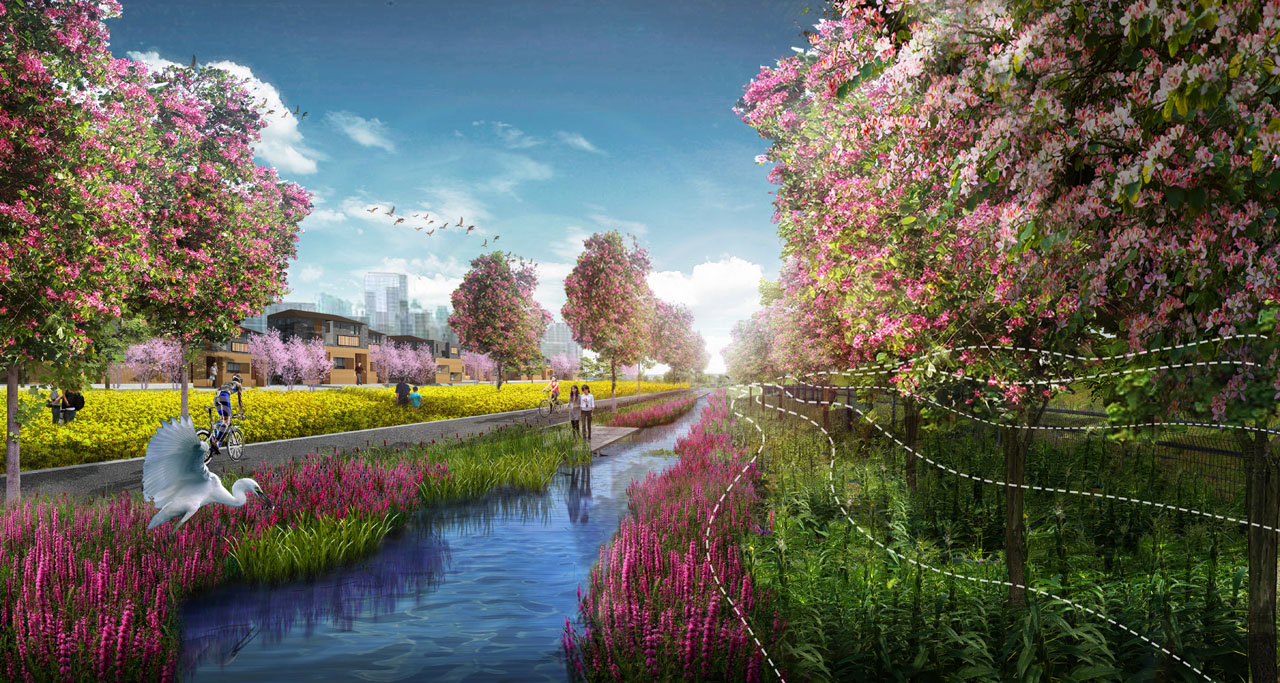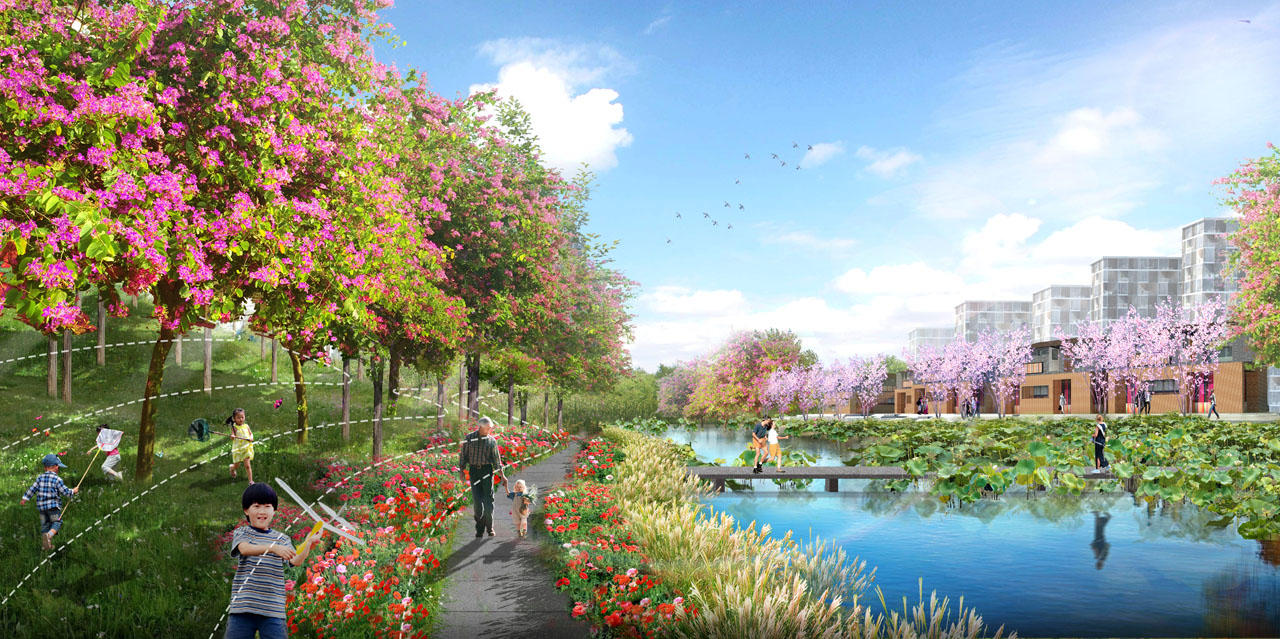Jingzhou Huanchang Lake Wetland Park
Project Information
- Project Location:
- China Jingzhou, Hubei
- Project Scale:
- 28.5 Square Kilometers
- Design Time:
- September 2017
Project Profile
1. Project Statement
Jingzhou Huanchang Lake Wetland Park is situated in the central-southern part of Hubei Province, in the northern section of Jingzhou City, within the Jin’an Ecological and Cultural Tourism Zone. The park covers approximately 28.5 square kilometers, encompassing most areas along Haizi Lake, Miao Lake, Longmen Lake, and the Taihu Port coast. The Haizi Lake-Taihu Port corridor is a key axis for Jingzhou's northern expansion, making the surrounding lake area crucial for the city’s future development. The project's construction holds significant importance for the future urban development of Jingzhou.
Designers aim to preserve and utilize the existing lotus ponds, fish ponds, and farmland as the park’s green foundation, integrating productive agricultural landscapes with low-maintenance native vegetation to create a productive, beautiful, and culturally rich urban park.
The overall layout consists of three lakes and two belts, with detailed internal functional zoning, forming ten functional areas: Historical Display Belt, Creative Flower Valley, Conference and Retreat Zone, Huaxi Resort Area, Ten Thousand Mu Lotus Pond Area, Canal Scenic Belt, Wetland Science Education Zone, Taihu Port Leisure Belt, Lake Port Fishing Street, and Phoenix Forest Park.
The main road around the lake, bicycle paths, and boardwalks form a recreational network, allowing visitors to leisurely enjoy the lakes and mountains of Jingchu. Existing roads and field paths are utilized and modified where possible, with some sections elevated to minimize interference with natural processes. The design respects the surrounding ancient city ruins and cultural heritage, achieving harmonious coexistence between human development and nature by balancing artificial construction with natural elements.
2. Objective and Challenge
Jingzhou is a city with a rich cultural history spanning over 2,700 years, blending ancient culture with modern civilization. It was the capital of the Chu Kingdom during the Spring and Autumn and Warring States periods and is one of the first 24 national historical and cultural cities designated by the State Council, recognized as an outstanding tourist city in China.
The site is surrounded by cultural heritage sites, such as the Jin’an City Ruins and the Yutai Mountain Ancient Tombs. The design area is bordered by villages and proposed projects like the Longhu Forum and a tourism town, making the surrounding context complex. The park design faces challenges such as maintaining the ecological foundation, preserving local cultural heritage, managing rainwater and flood control, and coordinating with surrounding land uses.
Designers have been commissioned to transform the park into a “Central Ecological Cultural Park” that integrates culture, tourism, sports, and leisure, meeting the requirements for events like marathons. The park serves as an ecological infrastructure around the lake, providing ecosystem services to the city while offering residents places for gathering, sports, relaxation, and vacation.
The project employs concepts like “Living with Floods,” “Urban Agriculture,” and “Minimal Intervention” to develop a park that reestablishes connections between people, land, and water, fostering harmonious coexistence with nature.
3. Design Strategy
1) Constructing a Flood Control System:
- Develop a complex flood storage system to form an ecological flood control and purification framework. Use various landscape models to purify water, reduce runoff, and enhance the flood storage capacity of the lakeshore area.
- Connecting Ponds to Lakes: For areas with large, numerous ponds, improve connections between ponds and lakes to achieve water storage and purification goals.
- Expanding Ponds and Building Islands: In regions with smaller, fewer ponds, balance the excavation and filling of soil to expand ponds and create islands, achieving water storage and purification objectives.
- Harmonizing Ports and Inlets: For the northern port inlets, connect their entries into the lake, allowing upstream water to pass through the lakeshore wetland belt for storage and purification before entering Chang Lake.
2) Preserving the Ecological Base:
- Maximize the preservation of natural vegetation (including wild grasses and shrubs), existing farmland water systems, and lakeshore trees, creating a lakeside forest network that enriches habitats and provides life support functions.
- The multilayered forest network creates diverse habitats and comfortable microclimates, increasing vertical space.
- New vegetation incorporates Jingzhou native and Chu culture plants as background and landscape elements.
3) Organizing the Production System:
- Streamline the production system (fish ponds, lotus ponds, rice fields, orchards) to continue the rich and productive cultural landscape of the Jianghan Plain.
- For high-elevation, steeply sloped farmland on the northern shore, maintain and enhance the existing terraced fields; for low-elevation, high-water-table farmland and orchards on the southern shore, create aquatic environments.
- Productive crops rotate seasonally, ensuring that citizens can enjoy agricultural landscapes year-round.
4) Creating a Multifunctional Slow-Movement System:
- Connect nodes with a slow-movement network, providing services such as lake marathons, heritage interpretation, and ecological education. Use the lakeside road as the backbone, linking the surrounding area to offer visitors a rich landscape experience.
- Surrounding the slow-movement system are activity spaces for camping, science education, sports, and outdoor activities.
4. Conclusion
Upon completion, the park will become a beloved leisure and recreation destination for local residents, as well as a venue for major sports events and public activities in Jingzhou. The park's buildings and structures will become iconic landmarks for the region and Jingzhou itself. Future residential and commercial developments will be centered around the lake park, establishing it as a vital area for urban development and a hub connecting surrounding land uses.
The park’s agricultural fields, flower valleys, and lotus pond landscapes will create a distinctive identity, attracting large numbers of visitors through social media and inspiring a love and appreciation for the natural environment. The firsthand experience of Chang Lake’s beauty and historical culture will enhance Jingzhou citizens' pride in their hometown and recognition of Jingchu culture.
